What’s New
Check out what we've been up to in October 2022
Kuranda Tree Frog Creek Survey
A team of Taskforce volunteers with the support of Wet Tropics Management Authority staff, surveyed a section of Warril Creek on 24 September. This is our fifth survey showing no presence of yellow crazy ants or electric ants in the lower reaches of Kuranda Creeks. Great news as yellow crazy ants have been previously found in this creek and threaten frog populations.
Kuranda Envirocare have a long-term frog monitoring site at Warril Creek and it is home to the iconic Kuranda tree frog (Litoria myola). Not only is the Kuranda tree frog critically endangered and endemic to Kuranda, there is also an endemic palm called the Myola Palm (Archontophenix myolensis) that is under threat from habitat loss. The Myola Palm is closely related to the Alexander Palm (Archontophoenix alexandrae) as is the Kuranda tree frog to the Green-eyed tree frog (litoria serrata). These species are examples of the biodiversity hot spot which was a refugia in the last ice age. The Wet Tropics split into north and south and before the forest joined back together some 10,000 years later, new species evolved.
Our next monthly survey will be in Warril Creek on 29 October 2022. If you would like to get involved, please get in touch. Community support is so important in eradicating yellow crazy ants from the Wet Tropics World Heritage Area.
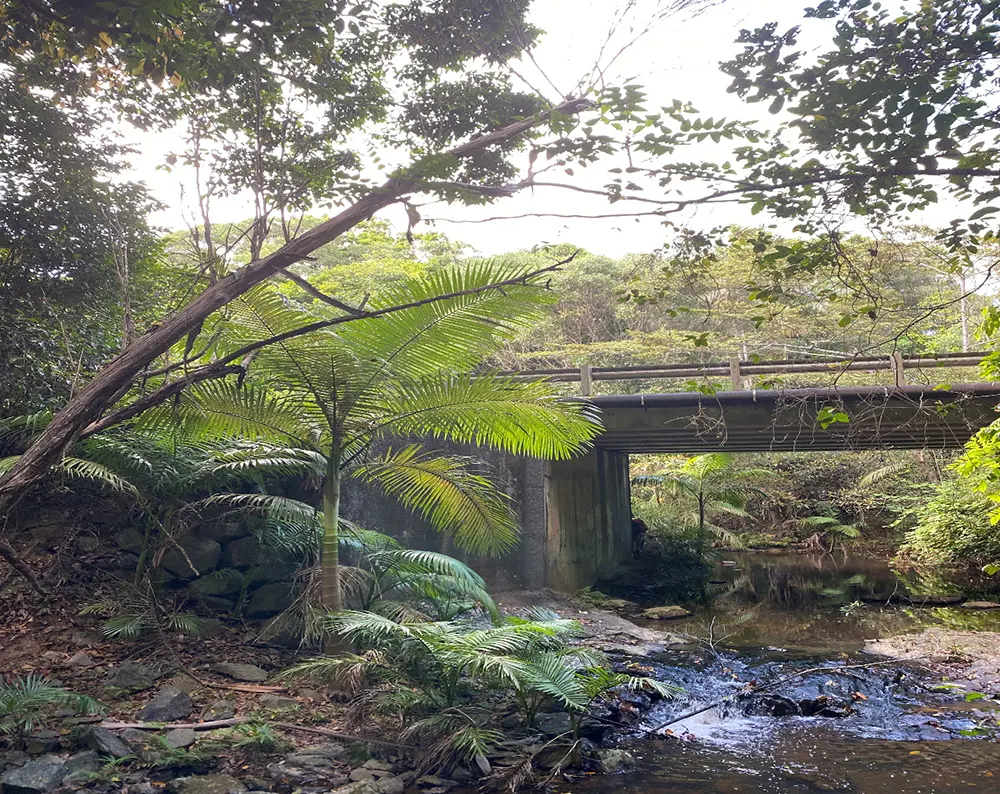
Archontophenix myolensis, the endemic Myola palm dominates Warril Creek riparian section

Warril Creek rail crossing
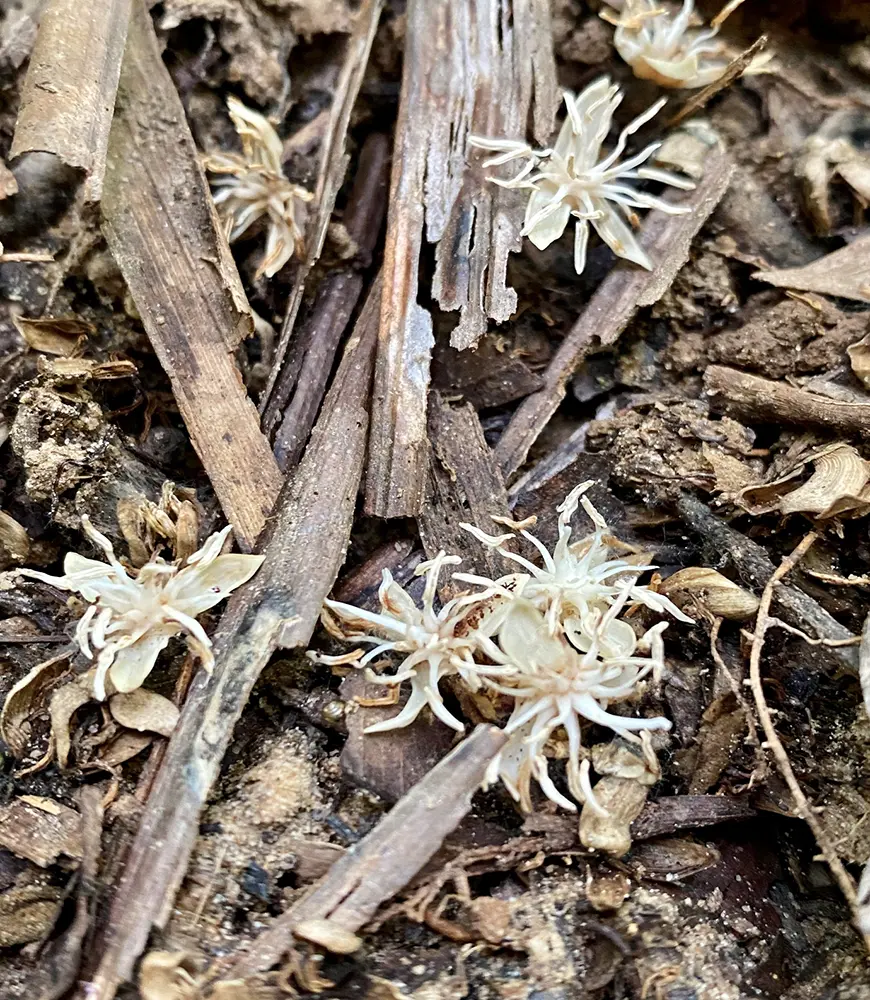
Myola Palm – Archontopheonix myolensis flowers

Scented Daphne – one of Kuranda Envirocare’s trees planted over 5 years ago to support frog habitat on Warril Creek
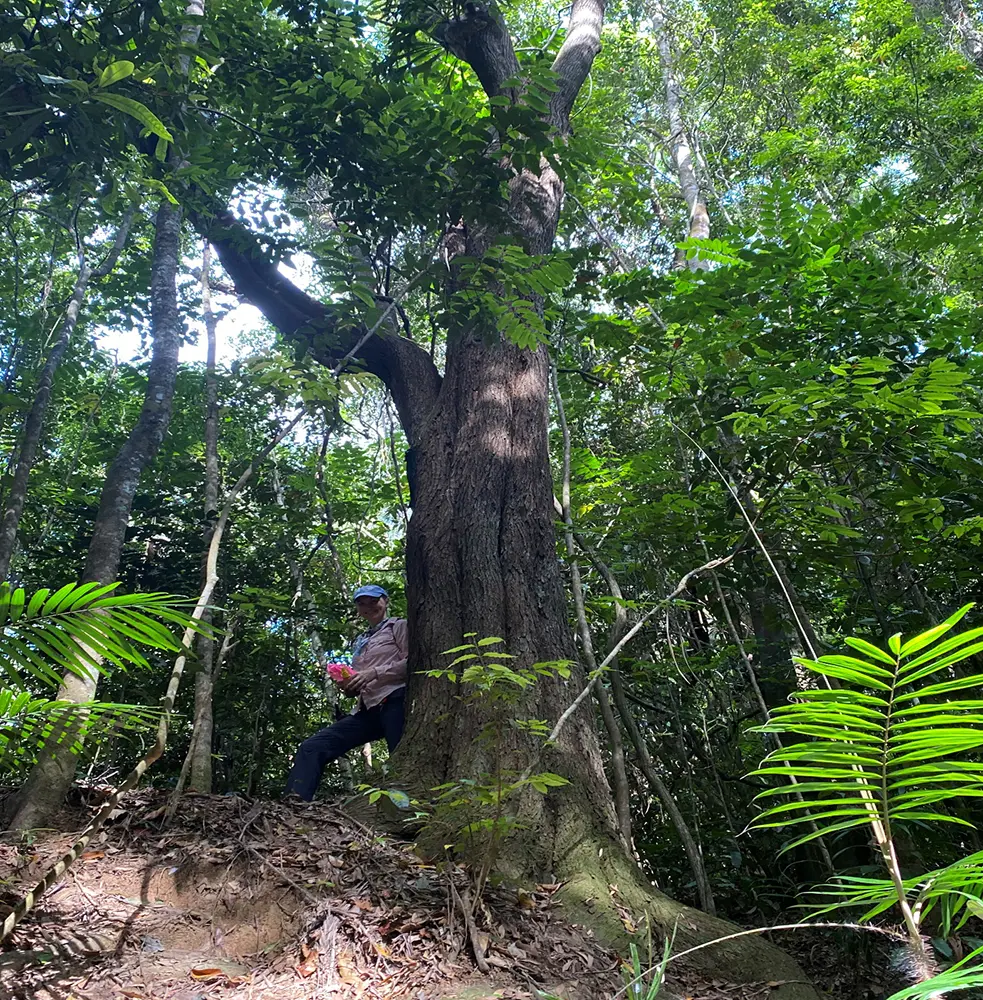
Taskforce volunteer, Sally standing near an old Acacia tree
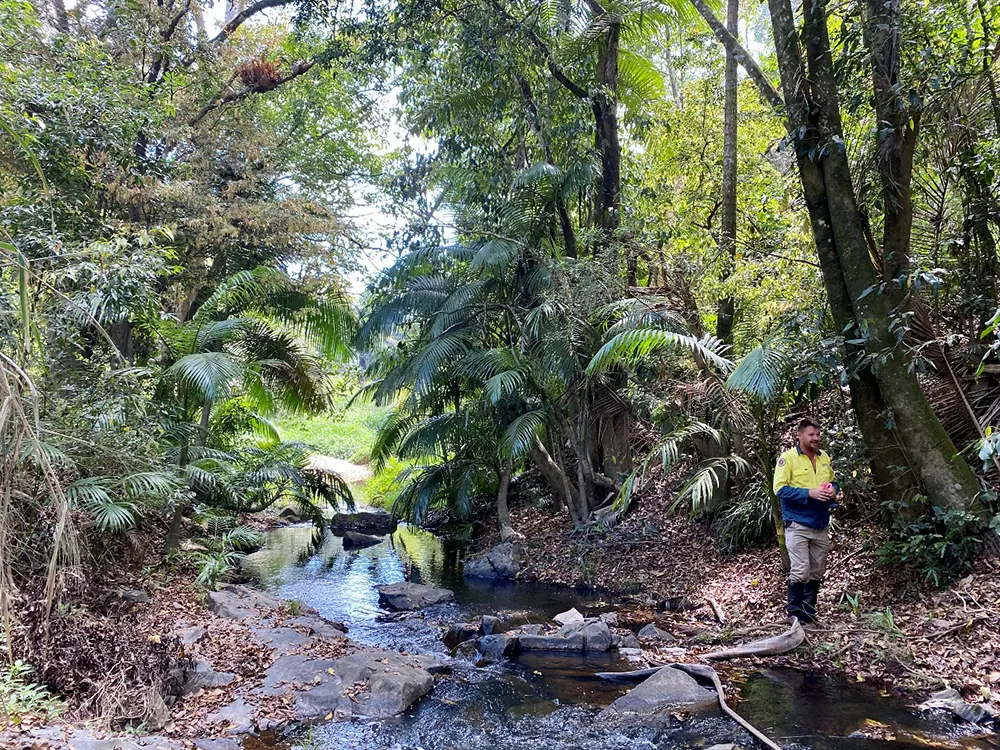
Wet Tropics Management Authority’s Yellow Crazy Ant Eradication Program field staff supports the Taskforce on their monthly survey in the majestic Warril Creek.

Kuranda Spring Festival
On Saturday 8 October, the Taskforce joined in the festivities at the Kuranda Spring Festival where the live yellow crazy ants and electric ants were a great point of interest for people to better recognise both of the invasive ants we currently have in the Kuranda region and therefore be better educated to report invasive ants.
Over 70 people visited our stall to gain a better understanding of the threats they both pose to the Wet Tropics World Heritage Area.
We demonstrated how to quarantine potted plants to prevent spreading invasive ants. Human assisted movement is one of the most common reason invasive ants are spread so if you live in an area where invasive ants are found please dump your green waste responsibly at an invasive ant approved refuse station.
Kuranda had their very first Colour Festival and the grand opening of the Cassowary Art Trail. Live music, a giant Cassowary walking around and free face painting were among some of the highlights.
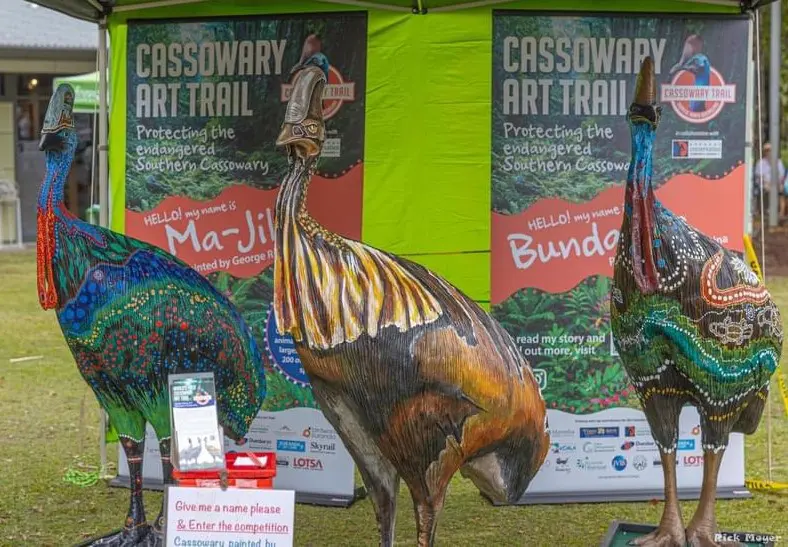
(photo credit Rick Mayer) Beautiful cassowaries made by Kuranda artists for the Cassowary Art Trail
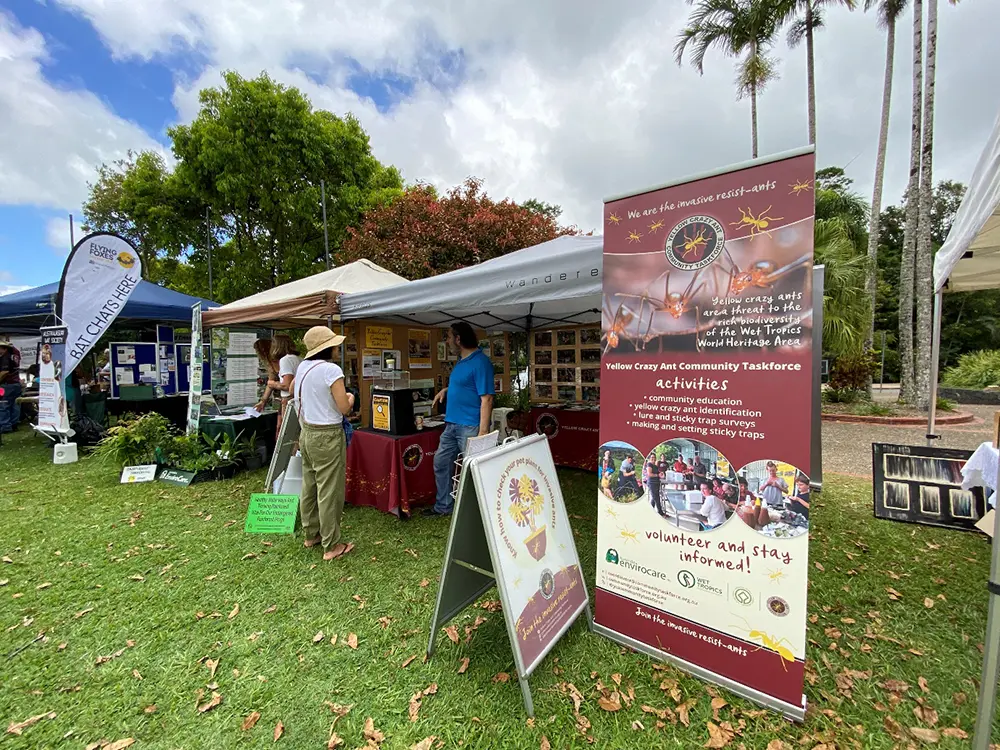
Community Taskforce stall at the Kuranda Spring Festival.
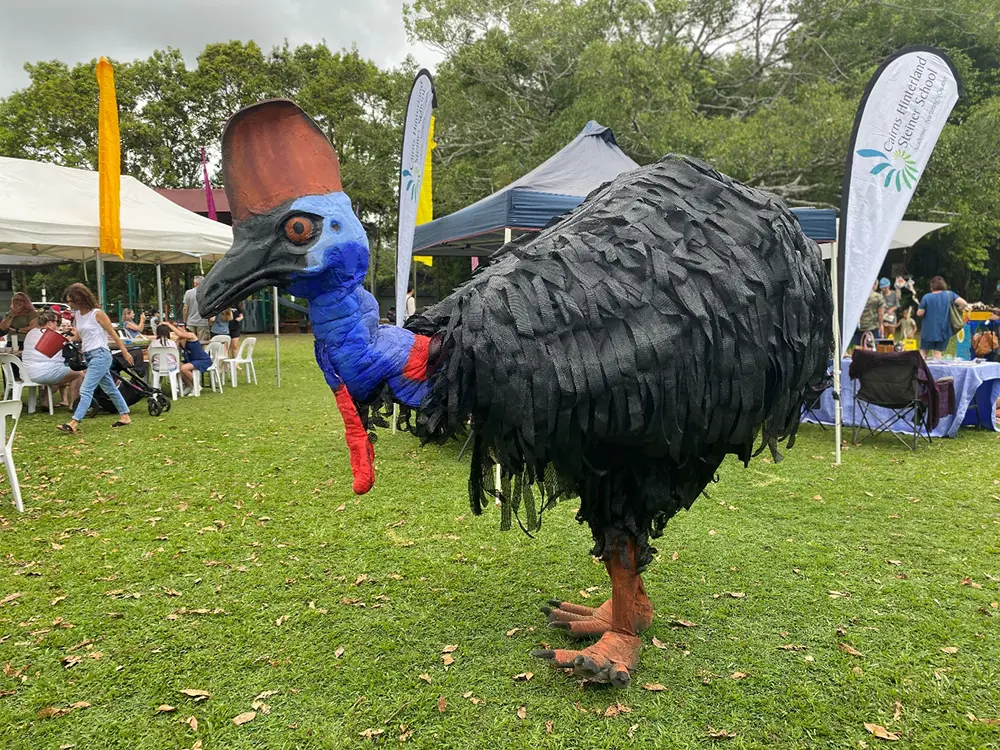
The critically endangered cassowary is under threat from invasive ants, lucky this one is not.
Protect your plants when protecting your patch
When it comes to protecting your patch from invasive ants; through water bathing and bare rooting the plants, do you know which plants can tolerate it?
In order to protect your plants while protecting your yard, we sought advice from plant enthusiast Mike Trenerry.
When exchanging, purchasing or gifting plants, it’s good to know which plant families can tolerate bare roots and which plant families can’t.
For the plants that don’t like air touching their root system, Mike recommends to not bare-root decorative plants in ceramic pots, fragile, sensitive, or delicate plants such as the herbaceous types, young vegetables, or small potted trees. These plants prefer the water bathing method.
For the more robust plant types that can handle bare roots. Mike suggests, bulbs, tubers, and rhizomes, such as root vegetables, gingers, or flowers, are best offered when bare-rooted and cleaned thoroughly.
Other types like cacti, dragon fruit, and a variety of ornamentals including many succulents, anthuriums, and philodendrons may be shared as cuttings whether rooted or not.
Tropical plants like bromeliads including pineapples, orchids, elephant ears, and assorted other aroids are routinely swapped and shared as bare-rooted plants. It can also be done with many flowers such as roses.
It is important to note that Bromeliads structure enables small ants to colonise inside and are a very common plant involved in electric ant movement. In saying that, water bathing this species after it has been bare rooted would be highly beneficial to minimise invasive ant spread.
An assortment of young plants such as vegetables, herbs, and even papaya, can be bare-rooted, on a ready to plant immediately basis. Otherwise, water bath.
To keep your bare rooted plants alive and thriving it is always best to attend to them quickly and have the plant ready for translocation into your garden.
To find out more about the bare-rooting and water bathing methods, check out the website: https://communitytaskforce.org.au/protect-your-patch-grow-something-great/
By protecting your patch from invasive ants, you can stop them from spreading and invading your yard, while protecting your home and native wildlife.

(left) Vege seedlings are too sensitive to bare root and prefer a water bath (right) bromeliads and other tropical plants can tolerate bare rooting
Volunteer With Us
Volunteer and join the Taskforce or stay informed about yellow crazy ants
What’s Coming Up
You want to get involved in our awesome events?
What’s happening
Surveys in Kuranda tree frog habitat
Invasive ants have been found in critical frog habitat and the Kuranda tree frog is under threat from the yellow crazy ant. Checking for invasive ants will ensure protection of this endemic and critically endangered species.
We need your help so please get in touch if you would like to assist with the survey.
Lunch provided.
WHERE: Lower reaches of Kuranda creeks
WHEN: Monthly survey 8–12.30 pm
Sat 29 October – Warril Creek
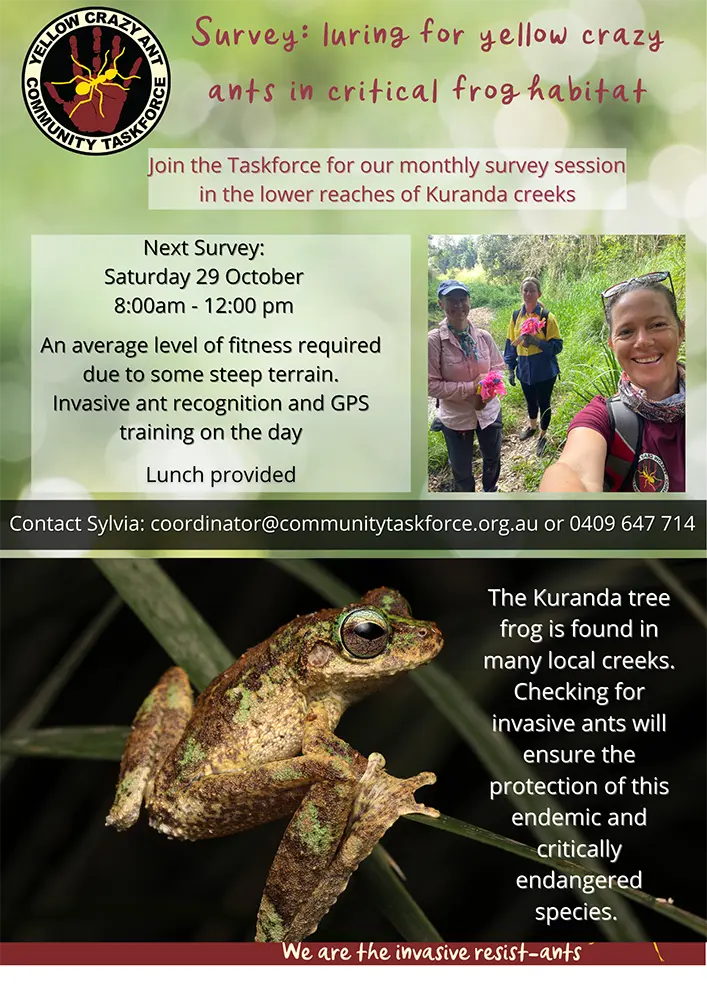
Djabugay Bulmba Ranger Survey Training
WHERE: Nyawarri Estate, Kuranda
WHEN: 17th October
Stall at Kuranda IGA
WHERE: Kuranda IGA
WHEN: November
Invasive ID Workshop
WHERE: Kuranda Recreation Centre
WHEN: November
On a final note
The Community Taskforce is a community-run organisation that assists the Wet Tropics Management Authority in managing the yellow crazy ant infestations in Kuranda. Volunteers are involved in some aspects of the program, including undertaking monitoring activities, completing surveys of known infestation areas and surveys in the surrounding area.
We search for both yellow crazy ants and electric ants.
To report illegal dumping contact Mareeba Shire Council on 1300 308 461. Report yellow crazy ants call 1800 CRAZY ANT
To volunteer with the Yellow Crazy Ant Community Taskforce call (07) 4093 8989, email coordinator@communitytaskforce.org.au or visit @ycacommunitytaskforce Facebook page.



